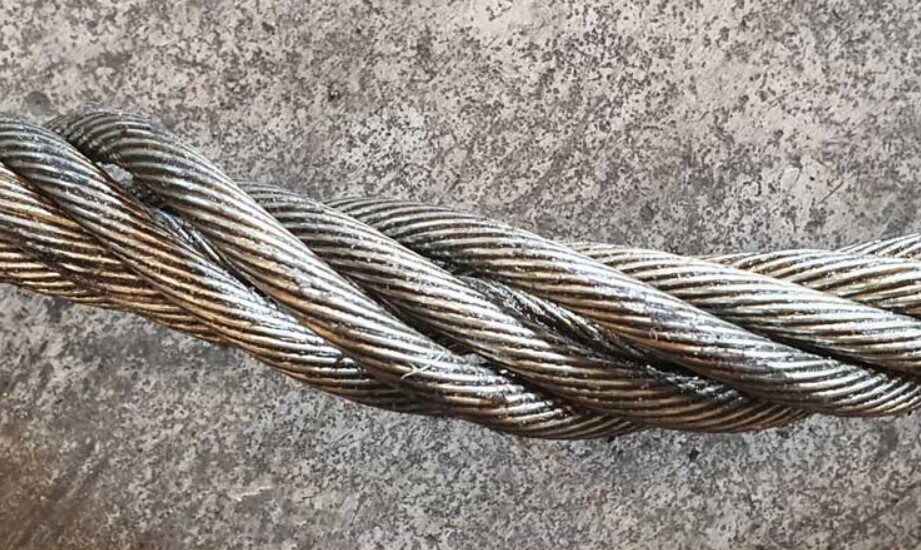According to the standard NF ISO 4309v2017, the Rope Category Number categorize wire rope by the number of load bearing wires obtained by the multiplication of the number of outer strands and the number of wires constituting them.
Example:
- 6x36 wire rope refers to a number of wires carrying of: 6x36 = 216 or an RCN of 09.
- 35x7 non rotating wire rope (16 outer strands and 7 wires constituting them): 16x7=112 or an RCN of 23-2.
It is used to determine the maximum number of broken wires, when reached, should lead to the removal of the wire rope.

What is the purpose of the Rope Category Number?
The maximum number of broken wires before a rope becomes dangerous depends on the construction of the wire rope.
To obtain the RCN classification, the number of load bearing wires will then be cross-referenced with the tables below using either the table of non-rotating ropes or the table of non rotation-resistant ropes depending on the type of wire rope.
Where to find the RCN of a wire rope?
There are several ways to find the RCN of a wire rope :
- On the data sheet sent by the supplier.
- By using the tables below from the NF ISO 4309v2017 standard (refer to the standard to use these tables).
Non non-rotating wire ropes:
|
Rope Category Number (RCN) |
Total number of load bearing wires in the outer strand layer of the rope |
|
01 |
n ≤ 50 |
|
02 |
51 ≤ n ≤ 75 |
|
03 |
76 ≤ n ≤ 100 |
|
04 |
101 ≤ n ≤ 120 |
|
05 |
121 ≤ n ≤ 140 |
|
06 |
141 ≤ n ≤ 160 |
|
07 |
161 ≤ n ≤ 180 |
|
08 |
181 ≤ n ≤ 200 |
|
09 |
201 ≤ n ≤ 220 |
|
10 |
221 ≤ n ≤ 240 |
|
11 |
241 ≤ n ≤ 260 |
|
Rope Category Number |
Total number of load bearing wires in the outer strand layer of the rope |
|
21 |
4 strands : n ≤ 100 |
|
22 |
3 or 4 strands : n ≤ 100 |
|
|
At least 11 outer strands |
|
23-1 |
71 ≤ n ≤ 100 |
|
23-2 |
101 ≤ n ≤ 120 |
|
23-3 |
121 ≤ n ≤ 140 |
|
24 |
141 ≤ n ≤ 160 |
|
25 |
161 ≤ n ≤ 180 |
|
26 |
181 ≤ n ≤ 200 |
|
27 |
201 ≤ n ≤ 220 |
|
28 |
221 ≤ n ≤ 240 |
|
29 |
241 ≤ n ≤ 260 |
|
30 |
261 ≤ n ≤ 280 |
|
31 |
281 ≤ n ≤ 300 |
|
|
n > 300 |




